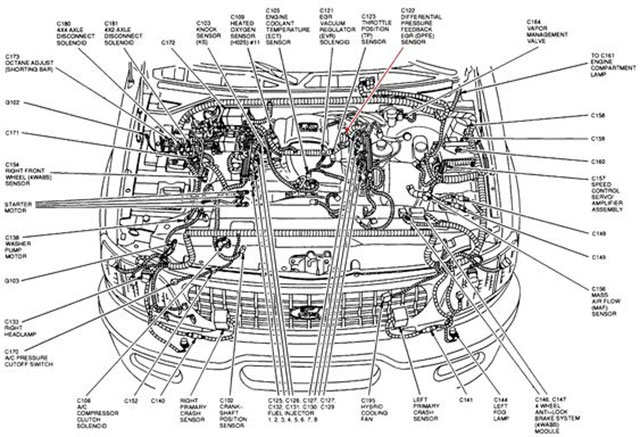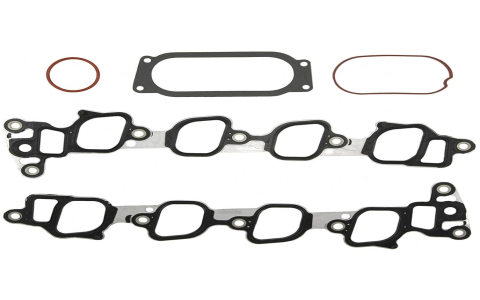Vacuum system integrity is critical for engine management and ancillary systems in the Ford 5.4L Triton engine. Recognizing these common symptoms indicates a potential vacuum leak, necessitating reference to the specific vacuum hose routing diagram for accurate diagnosis and repair.
Engine Performance Issues
- Rough or erratic idling: Fluctuating RPMs or stalling at idle are hallmark signs of an unmetered air leak.
- Hesitation or stumbling under acceleration: Leaks disrupt the air/fuel ratio sensed by the Mass Air Flow (MAF) sensor.
- Increased fuel consumption: The engine control module compensates for perceived lean conditions by enriching the mixture.
- Illuminated Check Engine Light (CEL): Often accompanied by lean codes like P0171/P0174 or misfire codes due to altered combustion.
- Deceleration surging: Engine RPMs may hang or surge when lifting off the throttle.
Braking System Problems
A compromised brake booster vacuum supply line leads to excessively hard brake pedal feel, requiring significantly more foot pressure to stop the vehicle. Hissing noises near the brake pedal when depressed are a strong indicator.
Visual Inspection & Leak Detection
- Damaged, cracked, brittle, collapsed, or disconnected hoses: Perform a careful visual inspection of all vacuum lines.
- Audible hissing sounds emanating from the engine bay, particularly at idle.
- Failed components: Leaks can originate from plastic tees, check valves, the intake manifold gaskets, the PCV valve, or the brake booster itself.
Locating the correct Ford 5.4 Triton vacuum hose diagram is essential due to intricate routing and component variations across model years. Using the diagram prevents misconnections, ensures proper system function, and is crucial for resolving the symptoms listed above.


